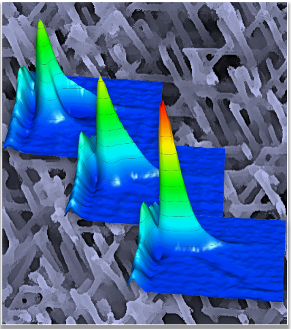3D Nanomagnetism Explored in Low Density Interconnected Nanowire Networks
In a recent paper published online in Nano Letters, Profs. Kai Liu, Gen Yin and their team report a study on 3D nanomagnetism in quasi-ordered metallic nanowire networks. A novel type of free-standing, interconnected metallic nanowire networks with ultralow density has been achieved over centimeter-scale areas, using electrodeposition into polycarbonate membranes that have been ion-tracked at multiple angles. Networks of interconnected magnetic nanowires further provide an exciting platform to explore 3D nanomagnetism, where their structure, topology and frustration may be used as additional degrees of freedom to tailor the materials properties. The team has found new magnetization reversal mechanisms in cobalt networks by capturing their “magnetic fingerprints” using the first-order reversal curve method. The fine structure of such nanowires hosts discretized magnetic configurations that can encode information in a repeatable manner, which provides an intriguing platform to host nontrivial topology and to practice neuromorphic computation. Their findings open up new possibilities for 3D integrated magnetic devices for next-generation information processing.
The paper can be accessed here: https://pubs.acs.org/doi/10.1021/acs.nanolett.0c04366
A full article and additional information is available on the Georgetown College Website: Physics Professors Study Magnetism in 3 Dimensional Nanoscale Networks for Next Generation Information Storage

3D nanomagnetism explored in metallic nanowire networks. For different orientations of the networks (shown in the background with an artist’s view), the “magnetic fingerprints” (colored plots) capture details of the magnetization reversal and interactions among different segments.
Credit: Edward Burks, Dustin Gilbert, and Kai Liu
